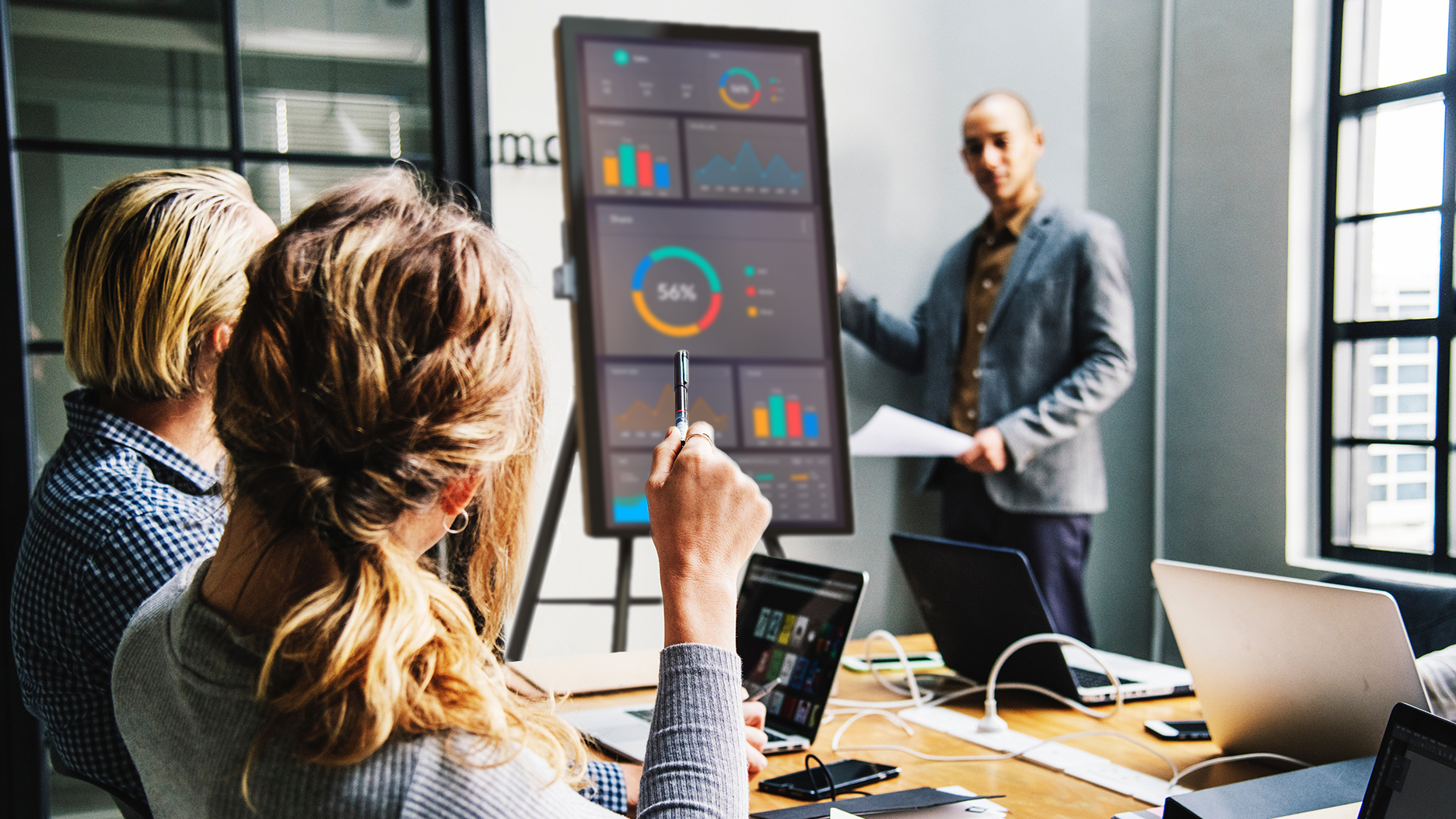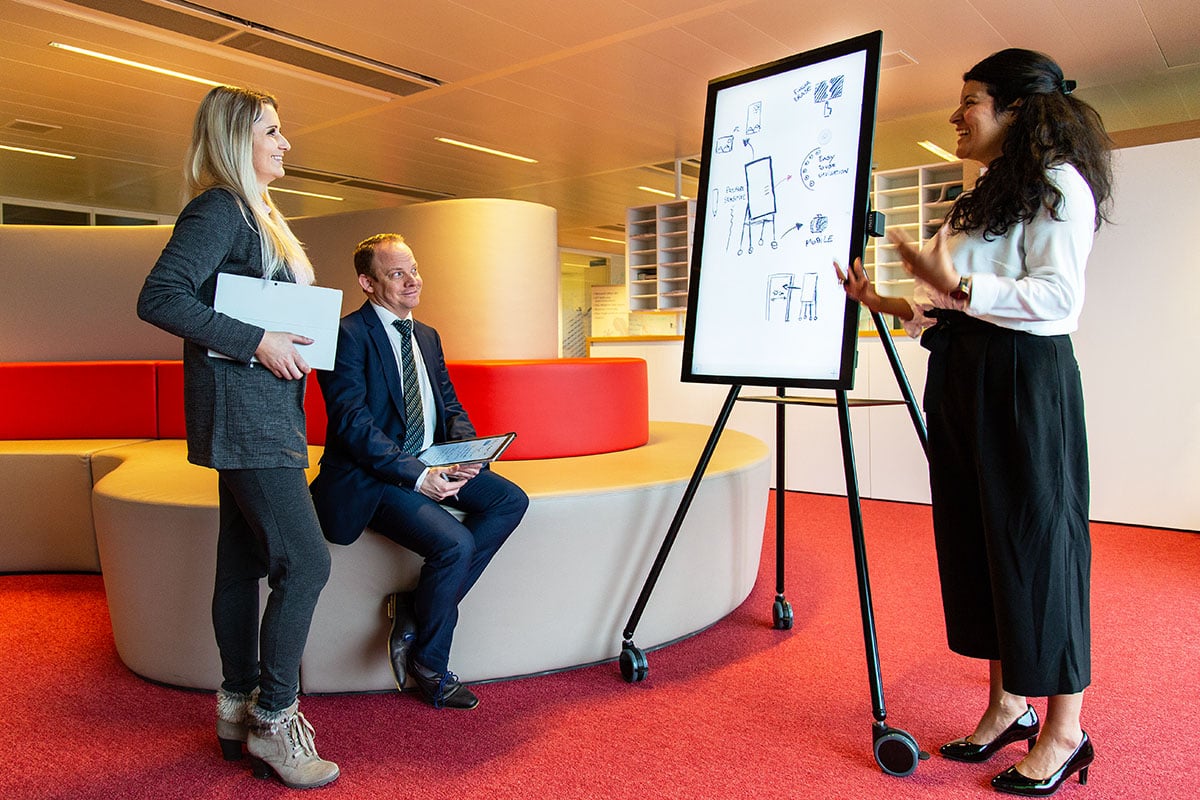Modern workspaces are changing. The digital revolution has given us many ways to collaborate remotely. But there’s nothing like rubbing shoulders with colleagues in the conference room. In reality, today’s meetings require a combination of both analog and digital communication.
The problem is that notes recorded on dry erase boards or paper easel pads are lost after each meeting presentation. But what if you could capture that analog input in your digital workspace? That’s where the digital flipchart comes in.

By now, we’re all quite accustomed to working in a digital environment. Who has secretaries anymore? In the 21st century, everyone has their own laptop or desktop computer. We all input our own ideas into our computers and share them across networks with others who are working on the same projects.
But without a secretary to record the minutes of our meetings, how can we make sure that the content of our important discussions finds its way into the digital record?
A digital flipchart can make this possible.
You all know what a paper flipchart is. The person leading the meeting uses a marker to put ideas on a blank page for everyone to see. When that sheet becomes full or cluttered, he simply flips the paper up and over the back of the pad and starts again on a fresh sheet of paper.
But what happens to all those ideas on the previous page? They are left to be stored with the used easel pad, usually forgotten, or simply tossed in the trash.
With a digital flipchart, none of that information is lost or wasted. Whatever is included on the flipchart screen can be saved or shared in the same way you would manipulate a file on your laptop. And you can rest assured that all the important things you talked about in your lengthy meeting will be preserved for future review, distribution, or analysis.
A digital flipchart is all about sharing. It’s easy to share the screen from your laptop or mobile device on the flipchart. In the other direction, you can share a PDF of your flipchart notes via email or QR code. Many people can contribute to the flipchart input, and the results of the collaboration can be refreshed and reused in future meetings.
It’s a collaborative tool that functions equally well in a live setting as well as in the digital workspace. Along with its note-taking capabilities, the flipchart screen can be used to show video or text. You can actually combine input from multiple sources and use additional pages to co-create an extensive collection of thoughts and ideas.
It doesn’t require a fixed location. You can move it from room to room as needed.
Anyone can use it -- it’s easy to learn. It’s a simple tool that includes flexible options for input, output, and display.
There as some features that should be basic in any digital flipchart that you may be considering.
As wonderful as technology is, sometimes it can be more of a hindrance than a help. Good digital flipcharts should be able to overcome any clumsiness in digital interaction or on-screen human input.
Communication flow should be simple and intuitive, and the flipchart should be an effective extension of the interplay of ideas already taking place around the conference table.
Digital flipcharts can improve meetings and automatically capture ideas as they are presented. They can bring the power of digital to your meetings. That would be of great benefit to any business, large or small.
Have you already seen the i3SIXTY? The brand-new mobile and interactive digital flipchart from i3-Technologies? Click here to see how it can turn your office into a collaborative workspace.

It’s the twenty-first century and remote working has truly transformed the modern workplace. A younger generation of employees seek more work-life balance, which includes working remotely from home....

Running a successful meeting requires a considerable level of engagement from its participants. A lot of things determine the level of participation a meeting gets – top on that list is the room...